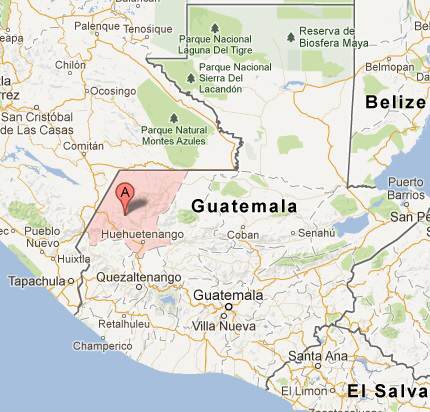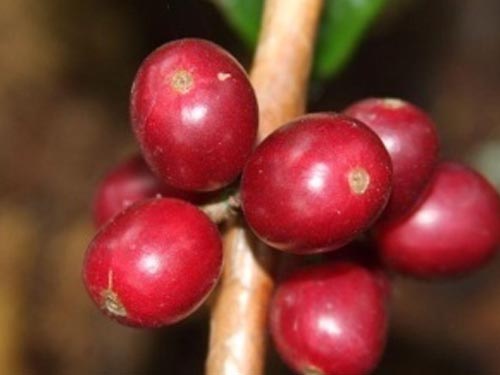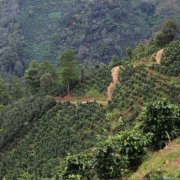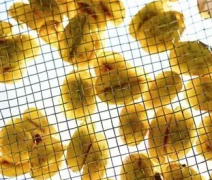Hand-made Guatemalan coffee the most special producing area of Guatemalan coffee Vivetnam fruit high-altitude coffee

Professional coffee knowledge exchange more coffee bean information please follow the coffee workshop (Wechat official account cafe_style)
Guatemala Coffee Industry Guatemala Coffee beans Guatemala Coffee recommendation
Cooking advice (provided by Nor Cooking):
Water temperature: 90-95 degrees Celsius
30g coffee powder coffee, 500g water
Degree of grinding: medium thickness
First stew: 60g water / 30 seconds, then boil to 500g water, all cooking time: 2:30
Brewing parameters of Guatemalan coffee
Make Guatemalan coffee by hand. 15g powder, medium fineness grinding (small Fuji ghost tooth cutter 3.5grinding), V60 filter cup, 89Mei90 degree water temperature, the first water injection 30g water, carry on 27 seconds of steaming, injection to 105g water cut off, wait for the powder bed water to half, then water injection, slow water injection until 225g water volume, tail section do not want, water powder ratio 1:15, extraction time 2:00
[key points of brewing]
The coffee powder per person is about 15 grams and the boiled water is 225 grams.
People who like light coffee can brew it with the amount of powder about 14 grams per person.
For those who like bitter taste, the amount of flour can be 16 grams per person, fully steamed and then slowly injected into boiling water.
The kettle used for hot water injection is easier to operate if it is injected for about seven or eight minutes, while the amount of boiling water is prepared according to the number of people. You can measure the beaker while dripping the required amount of coffee liquid.
Do not drop the filtered extract to the last drop, and stop in the residual state (if all the drops may have smells or impurities, etc.).
Heat the beaker without boiling it and pour it into the coffee cup.
This approach, like syphon, is technologically important. At first, the coffee may be very sour, in addition to the poor control of water output, the quality of the coffee itself (freshness … Etc) and particle size are also important factors.
[brewing method]
1. The next part of the filter paper is folded along the seam and placed in the drip.
two。 Pour the coffee powder into the drip with a measuring spoon and tap a few more times before the surface becomes flat.
3. After boiling the river water in a teapot, pour it into a small-nozzle kettle and gently inject boiled water from the central point (the water temperature is about 89 / 90 degrees). Slowly start to spiral the boiling water into the kettle and
Until it's covered with powdered coffee. Be sure to pour it in slowly.
4. Extract the delicious ingredients and steam the expanded coffee powder (stay for about 30 seconds).
5. The second time the boiling water is injected slowly from the surface of the coffee powder. The amount of water injected must be consistent with the amount of coffee liquid extracted, and the boiling water of the filter paper must be kept at a certain level.
6. The extraction liquid can be stopped as soon as it reaches the number of people, and the state of boiling water left in the filter paper will be discarded.
□ Vivette Nango is located on the border between Guatemala and Mexico, the towering mountains and pristine rainforest environment are very suitable for growing coffee, most of the top COE estates over the years come from this, the most famous is the Injerto manor, the victorious army of COE in the melon country.
Among the eight main coffee producing areas in Guatemala, but the most special one is Vivette Nanguo, which is different from the volcanic soil weathered by volcanic ash or lava in Antigua, Attilan and San Marcos. Vivette Nan Fruit is mainly calcareous soil, it is worth mentioning that the highest elevation of coffee growing in this area can reach 2100m, which is quite rare in Central American coffee producing areas. Vivette Nan Fruit Coffee generally has obvious mellow thickness and rich fruit acid performance. except for the well-known independent estates such as El Injerto, Finca La Bolsa, Finca La Providencia and so on, most of the remote mountain areas at higher altitude are planted and harvested by small-scale farmers and handed over to regional treatment plants.

Purchase link: https://item.taobao.com/item.htm?spm=a1z10.5-c.w4002-15673140460.18.5faa6972kWMTWV&id=561990916965
Important Notice :
前街咖啡 FrontStreet Coffee has moved to new addredd:
FrontStreet Coffee Address: 315,Donghua East Road,GuangZhou
Tel:020 38364473
- Prev

Guatemala Vivette Nanguo Tianyi Manor Finca La Providencia cooking suggestion
For more information on coffee beans, please follow the coffee workshop (Wechat official account cafe_style) Guatemala coffee industry Guatemala coffee beans Guatemala coffee recommendation (Finca La Providencia) located in San Pedro Nita (San Pedro Necta) in Guatemala's Vivette Huehuetenango region. day
- Next

Introduction to the treatment of Kaddura Fine Coffee in Chateau San Pero, Guatemala
Professional coffee knowledge exchange more coffee bean information please follow the coffee workshop (Wechat official account cafe_style) Guatemala coffee industry Guatemala coffee beans Guatemala coffee recommendation Guatemala Finca Las Deliclas country: Guatemala level: SHB production area: Atitlan production area altitude: 1600 meters treatment: White honey variety: Kaddura treatment
Related
- Detailed explanation of Jadeite planting Land in Panamanian Jadeite Manor introduction to the grading system of Jadeite competitive bidding, Red bid, Green bid and Rose Summer
- Story of Coffee planting in Brenka region of Costa Rica Stonehenge Manor anaerobic heavy honey treatment of flavor mouth
- What's on the barrel of Blue Mountain Coffee beans?
- Can American coffee also pull flowers? How to use hot American style to pull out a good-looking pattern?
- Can you make a cold extract with coffee beans? What is the right proportion for cold-extracted coffee formula?
- Indonesian PWN Gold Mandrine Coffee Origin Features Flavor How to Chong? Mandolin coffee is American.
- A brief introduction to the flavor characteristics of Brazilian yellow bourbon coffee beans
- What is the effect of different water quality on the flavor of cold-extracted coffee? What kind of water is best for brewing coffee?
- Why do you think of Rose Summer whenever you mention Panamanian coffee?
- Introduction to the characteristics of authentic blue mountain coffee bean producing areas? What is the CIB Coffee Authority in Jamaica?

